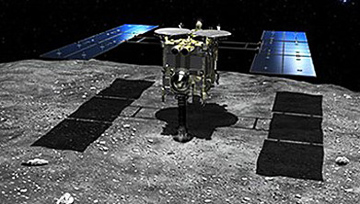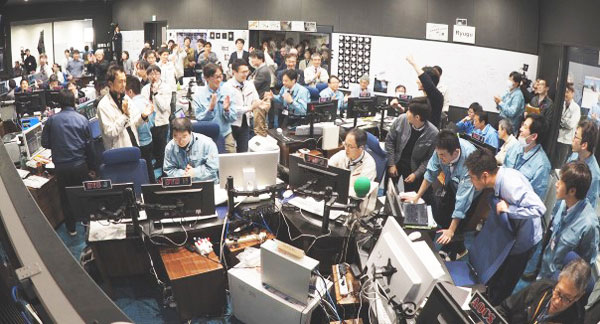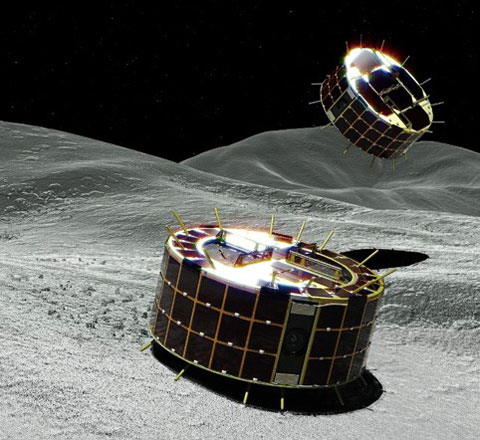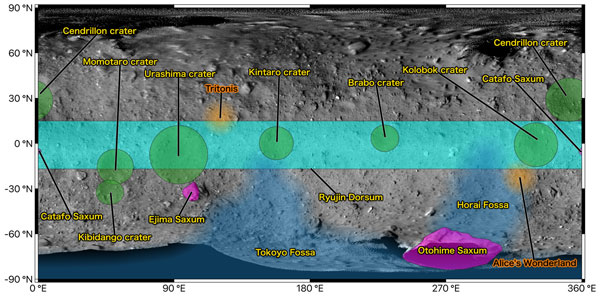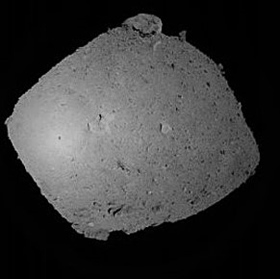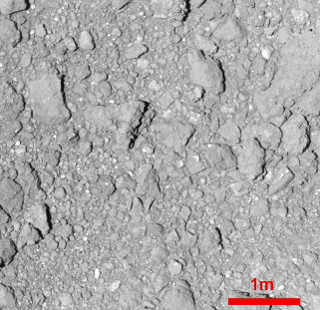News
Hayabusa 2's Successful Landing on Asteroid Ryugu - Heroic Achievement for Tough Tasks Executed 300 Million Kilometers away from Earth Updated in April 2019
Japan Aerospace Exploration Agency's (JAXA) space probe Hayabusa 2 had finally landed on the asteroid Ryugu on January 22 at 7:00 am. The probe had already reached quite close to the asteroid by June 2018. The asteroid Ryugu is located about 300 million kilometers from Earth. When Hayabusa 2 approached the asteroid, the JAXA team had released two small exploring rovers onto the asteroid's surface to carefully determine where to land. After landing, they were able to pick up some samples, which was the ultimate goal of this project. Difficult tasks conducted so far away from Earth had ended in success. It is a heroic achievement, next to its predecessor Hayabusa. At the press conference after confirmation of successful landing, JAXA spokesperson commented with relief: “Mankind has finally reached the new little star and we were able to land in one of the best conditions we assumed.”
According to JAXA, the landing point was a 6-meter wide spot near Ryugu's equator and was named Tritonis. In previous investigations, the surface of the asteroid was known to be scattered with rocks, without much flat areas to land. Initially, the probe was supposed to land in October 2018, but the plan was postponed for a careful and strategic landing plan. Hayabusa 2 had been waiting 20 kilometers above Ryugu, but from October 21, it gradually started descending. The landing was automatically controlled through a computer loaded on the probe. Upon landing, the probe extended a cylindrical device from the bottom of the aircraft and fired a metal bullet to collect flying dusts.
The combined pair of rovers had been called Minerva-II-1 but were renamed HIBOU (Highly Intelligent Bouncing Observation Unit; formerly known as Rover-1A) and OWL (Observation unit with Intelligent Wheel Locomotion; formerly known as Rover-1B) after separation. During November-December 2018, the rovers had conducted various missions. After all tasks are completed, they are going back to Earth and will drop the sample-filled capsule onto the Australian desert by the end of 2020.
Hayabusa 2 is the successor to Hayabusa which managed to bring back a rock sample from another asteroid called Itokawa in 2005. Hayabusa 2 weighs 600 kilograms. The propulsion unit is made up of an ion engine and it carries an optical camera, a laser altimeter and other technical equipment plus landing devices. It was launched via an H2A rocket from Tanegashima Space Center (Kagoshima Prefecture) on December 2014. After orbiting around the Earth for a year, it came very close to the Earth in order to make use of the Earth's gravity for a “swing-by.” After the swing-by, the probe changed direction to travel towards the sun and had finally reached the surface of Ryugu on June 27, 2018. The probe's traveled distance amounts to 3.2 billion kilometers.
Ryugu is a small asteroid found in 1999. It goes around the sun in about a year by traveling near orbits of the Earth and Mars. From Hayabusa 2's observation, it is shaped like a diamond or an abacus bead. The distance between Ryugu and the Earth is slightly changeable, but now they are 300 million and 4,000 (300,004,000) kilometers apart. The asteroid itself is 900 meters wide. It is twice as large as the asteroid Itokawa explored by the predecessor Hayabusa. Rocks containing water and organic matter were found on Ryugu with many traces from the primitive solar system.
